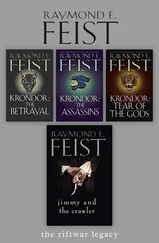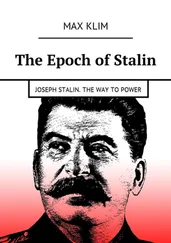Jacob Schiff, ‘Loans easier for Russia’, The New York Times, 20 March 1917. http://query.nytimes.com/mem/archive-free/pdf?res=9B04EFDD143AE433A25753C2A9659C946696D6CF
John B Young (National City Bank) ‘Is A People’s Revolution’, The New York Times, March 16 1917.
‘Bankers here pleased with news of revolution’, ibid.
‘Stocks strong◦– Wall Street interpretation of Russian News’, ibid.
‘Bolsheviki Will Not Make Separate Peace: Only Those Who Made Up Privileged Classes Under Czar Would Do So, Says Col. W B Thompson, Just Back From Red Cross Mission’, The New York Times, January 27 1918.
Armand Hammer of Occidental Petroleum, who had been a concessionaire at the earliest stages of the Soviet regime, stated of his meeting with Trotsky that he was questioned as to how US capitalists regarded Russia as a ‘desirable field for investment?’ Trotsky, having returned from the Urals, thought that the region had great possibilities for American capital. Armand Hammer, Hammer: Witness to History (London: Coronet Books, 1988), 160.
Lenin had stated to Hammer: ‘The New Economic Policy demands a fresh development of our economic possibilities. We hope to accelerate the process by a system of industrial and commercial concessions to foreigners. It will give great opportunities to the United State’. Ibid., 143.
Antony Sutton, National Suicide: Military Aid to the Soviet Union (New York: Arlington House, 1973).
For Roosevelt’s commitment to friendship with Stalin see the CIA essay: Gary Kern, How “Uncle Joe” Bugged FDR, Central Intelligence Agency, https://www.cia.gov/library/center-for-the-study-of-intelligence/csi-publications/csi-studies/studies/vol47no1/article02.html
A A Gromyko, Memories. (London: Arrow Books, 1989).
For example, G Edward Griffin, The Fearful Master: A Second Look at the United Nations (Boston: Western Islands, 1964).
Quigley was an eminent historian and governmental adviser, and taught at Foreign Services School, Georgetown University, Harvard and Princeton universities. President Clinton spoke of Quigley as his adviser when at Harvard.
Hence the title of Quigley’s magnum opus, Tragedy and Hope (New York: Macmillan Co., 1966).
Caroll Quigley, Tragedy and Hope, ibid., 892.
Ibid., 893.
Ibid., 895.
Ibid.
Ibid.
Bernard Baruch, The Baruch Plan, 1946. http://www.atomicarchive.com/Docs/Deterrence/BaruchPlan.shtml
A A Gromyko, op. cit.
Dulles suspected that the peace initiative came from the Emperor himself.
‘Ladies of the Press’, panel-interview programme, WOR-TV, New York, January 19, 1963. http://www.greenwych.ca/dulles.htm
Bob Fisk, “The Decision to Bomb Hiroshima and Nagasaki,” II, 1983. The article can be found at: http://www.greenwych.ca/hiro2bmb.htm
Ibid.
Bernard Baruch, NY Tribune, April 17, 1947. cited by Fisk, ibid.
Frances Stonor Saunders, op. cit., 91.
Bertrand Russell, ‘The Atomic Bomb and the Prevention of War’, Bulletin of Atomic Scientists, October 1, 1946, 5.
Ibid., 2.
Ibid., 3.
Ibid.
Bertrand Russell, Has Man a Future? (Hammondsworth: Penguin Books, 1961), 25.
Peter Grosse in his semi-official history of the CFR, calls the Council ‘the East Coast foreign policy establishment’. P Grosse, Continuing the Inquiry, op. cit., Chapter: ‘X’ Leads the Way,’ http://www.cfr.org/about/history/cfr/x_leads.html
Ibid., ‘The First Transformation’.
Ibid., ‘X Leads the Way’. “X” was Kennan, an anonymous policy-maker.
Ibid.
Ibid., “The First Transformation.,” http://www.cfr.org/about/history/cfr/first_transformation.html
Ibid.
K R Bolton, ‘Mikhail Gorbachev: Globalist Super-Star’, Foreign Policy Journal, April 3, 2011; http://www.foreignpolicyjournal.com/2011/04/03/mikhail-gorbachev-globalist-super-star/
The Gorbachev Foundation, “About Us, The Foundation Projects and Structural Subdivisions,” http://www.gorby.ru/en/rubrs.asp?rubr_id=302
Ibid.
George H W Bush, speech before US Congress, March 6, 1991.
For example, the “Eurasian” concept whose chief proponent is Prof. Alexander Dugin, head of the Center for Conservative Research, Moscow State University, who advocates a “multi-polar” world of power bloc “vectors” as an alternative to globalization.
Jack Kemp, et al, Russia’s Wrong Direction: What the United States Can and Should do, Independent Task Force Report no. 57 (New York: Council on Foreign Relations, 2006) xi. The entire publication can be downloaded at: http://www.cfr.org/publication/9997/
Richard N Haass, CFR President, ibid.
K R Bolton, ‘The Globalist Web of Subversion’, Foreign Policy Journal, February 7, 2011; http://www.foreignpolicyjournal.com/2011/02/07/the-globalist-web-of-subversion/
Ibid., 4.
Ibid., 5.
Ibid., 6.
Ibid., 7.
It is often overlooked that Stalin had inherited the totalitarian structure that had already been established by Lenin and Trotsky, who were hardly charitable in their dealings with opponents.
See Chapter I.
Leon Trotsky, ‘The Workers’ State, Thermidor and Bonapartism’, International Socialist Review, Vol.17 No.3, Summer 1956, 93-101, 105, http://www.marxists.org/archive/trotsky/1935/02/ws-therm-bon.htm
Leon Trotsky, The Revolution Betrayed, op. cit., http://www.marxists.org/archive/trotsky/1936/revbet/ch07.htm
Warsaw Pact and Comecom, military and economic blocs respectively.
K R Bolton, The Red Face of Israel, Foreign Policy Journal, 2 August 2010 http://www.foreignpolicyjournal.com/2010/08/02/the-red-face-of-israel/all/1
Arkady Vaksberg, Stalin Against the Jews (New York: Alfred A Knopf, 1984), inter alia.
Paul Lendvai, Anti-Semitism in Eastern Europe (London: Macdonald & Co., 1972), 243-245.
See Chapter II.
J Brent and V P Naumov, Stalin’s Last Crime: The Doctors’ Plot (London: John Murray, 2004), 1-10.
Читать дальше












